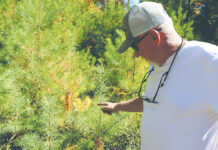ST. PAUL, Minn. — The wet fall has made harvest very challenging. Not only are farmers scratching their heads about how they are going to get in the field to harvest, they’re also wondering when they will have time to complete the fall tillage.
Strategies
To limit soil damage and to help with soil warm-up in the spring, keep these strategies in mind:
– Fill in ruts with light tillage — resist the temptation to aggressively fill them in. Just fill in ruts with light tillage by running equipment at an angle. You may need 2-3 passes.
– Keep tillage shallow. A light tillage pass like disking is useful for incorporating residue and introducing air into the soil. If the soil is wet, try to operate this shallow tillage equipment no deeper than 3 inches.
Another option for wet soils is vertical tillage. Vertical tillage runs 1 to 3 inches deep and uses straight or wavy coulters, a harrow and rolling baskets.
Some “frost tillage” may be possible. There are generally at least one to two freeze-thaw cycles each fall. In the fall of 2007, a strip-tiller was run through 1.5 inches of frost and the machine worked very well. However, tillage may not be practical when the frost is much deeper.
– Prepare equipment properly. Wet soils have a high potential for compaction. To limit soil compaction, keep axle loads under 10 tons and properly maintain air pressure in the tires.
On wet soils, use the lightest tractor that can still get the job done. Check over equipment and replace worn parts, sharpen blades, and adjust air pressure for each field’s soil conditions. These small details are more important in extreme moisture conditions.
– Plan ahead for spring. Planting soybeans may be the best option in fields with heavy residue.
Corn-on-corn
Corn-on-corn has more residue to manage and needs additional nitrogen fertilizer than corn following soybean. Row cleaners are a must for corn following corn in order to obtain uniform seeding depth and facilitate warming of the soil over the seed.
For corn following corn where high quantities of surface residue are present, consider a starter fertilizer. Wheat is another option for heavy residue fields.
However, if you are planting wheat after corn, make sure to choose a variety that minimizes the potential for diseases.









